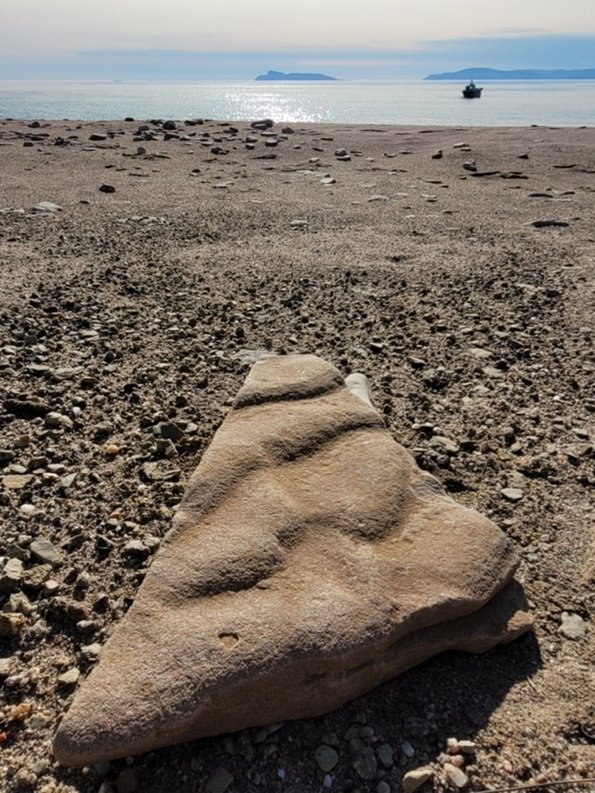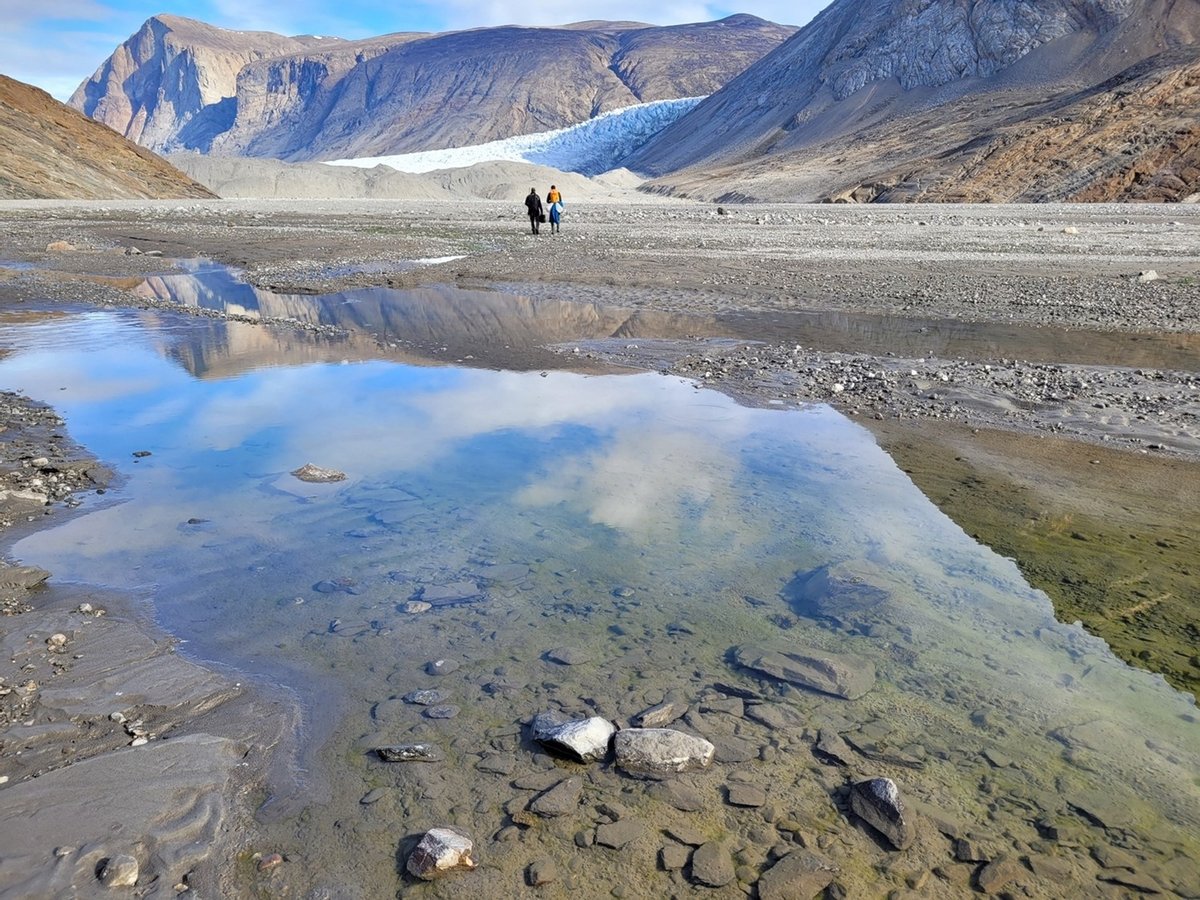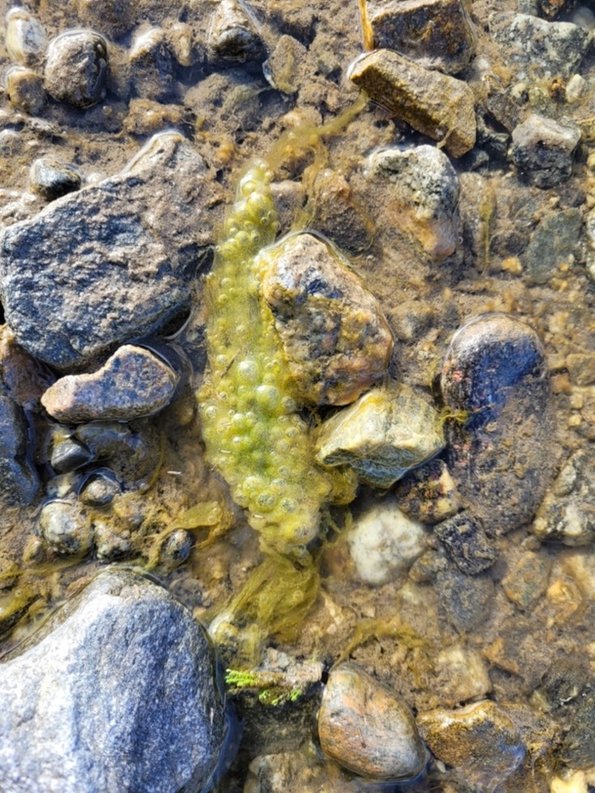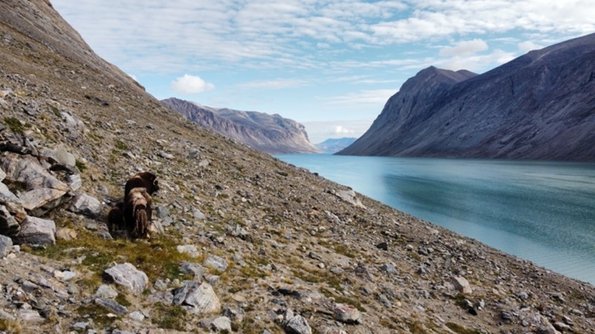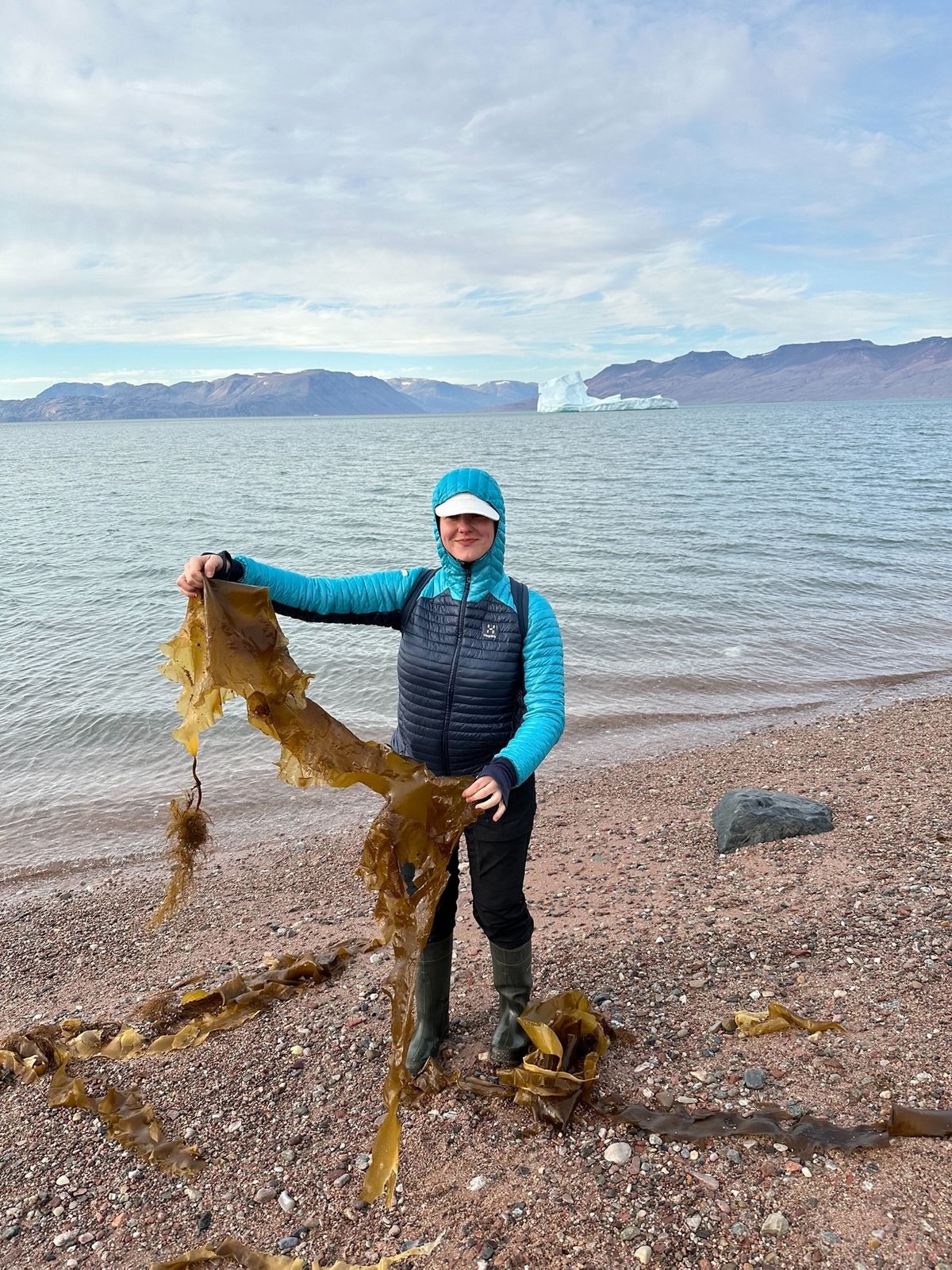Two young scientists share their experiences doing fieldwork in remote Northeast Greenland, check out their blog
Rocks, water and signs of life
The water, rocks, and life hold stories. They tell us what has been present in the past, or how the environment is, or has been doing. For instance, the Tyroler delta was covered in ripples left by the water that has flown past. On a later trip to Fossil Bay, I think I found a fossil of such ripples from the past. As a biogeochemist, I study how chemical elements (nutrients, minerals, metals) flow through living systems (animals and plants, whose bodies mostly consist of carbon) and their physical environments––in my case: freshwaters and coasts. So, when I entered the Tyroler delta, I started looking for signs of life, starting with algae––which are a sort of aquatic plants without roots, that can be nutrition for other animals. As the streams originate directly from the glacier and contain few nutrients, and the landscape is very disturbed by the river, there is almost no vegetation around. I would expect very few algae in this environment, but there were still algae to be found in the riverbeds.
We also saw muskoxen footprints and poop in the delta connecting the river and coast, I wondered if the algae grew because of the nutrients in these poops? Or if they would grow directly in the river water as well? Or maybe the silt is somehow nutritious? So, I made sure to bring some of the silt and river water to the station for an experiment to see if algae in seawater can respond to these amendments. On the way back we got a real treat, we saw the actual muskoxen who left these poops on the mountain side.
The seas here are not very rich in life. There is low chlorophyll (microalgae) and I have seen many fewer birds and marine mammals than what I saw in other Arctic areas, e.g. Spitsbergen (Svalbard, Norway) and northern Iceland. The Arctic Calanus glacialis zooplankton that we find here is larger than the more southern Calanus species, and there are very large macroalgae (or seaweeds) around which are mostly intact, showing little sign of smaller animals grazing on it. Why is there so little of everything, yet what’s there seems to be large? Intuitively I would think there should be only smaller species, because everything is barren and there is not so much food. There is a theory that explains that species in the polar regions as a rule are larger than similar species at lower latitude, the Bergmann rule. There are several additions to this rule, but in general, it is because when a body is larger, it has relatively less surface to lose body heat, so it costs less energy to stay warmer.


